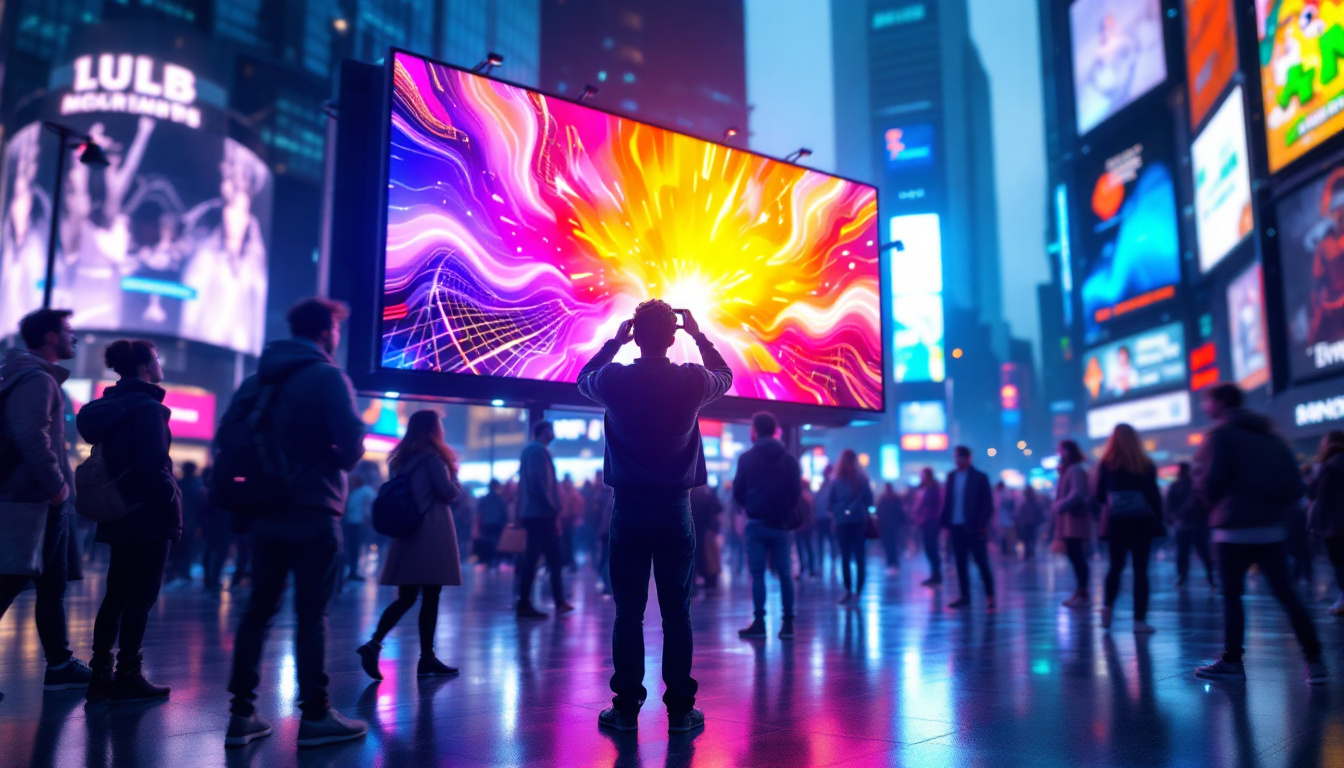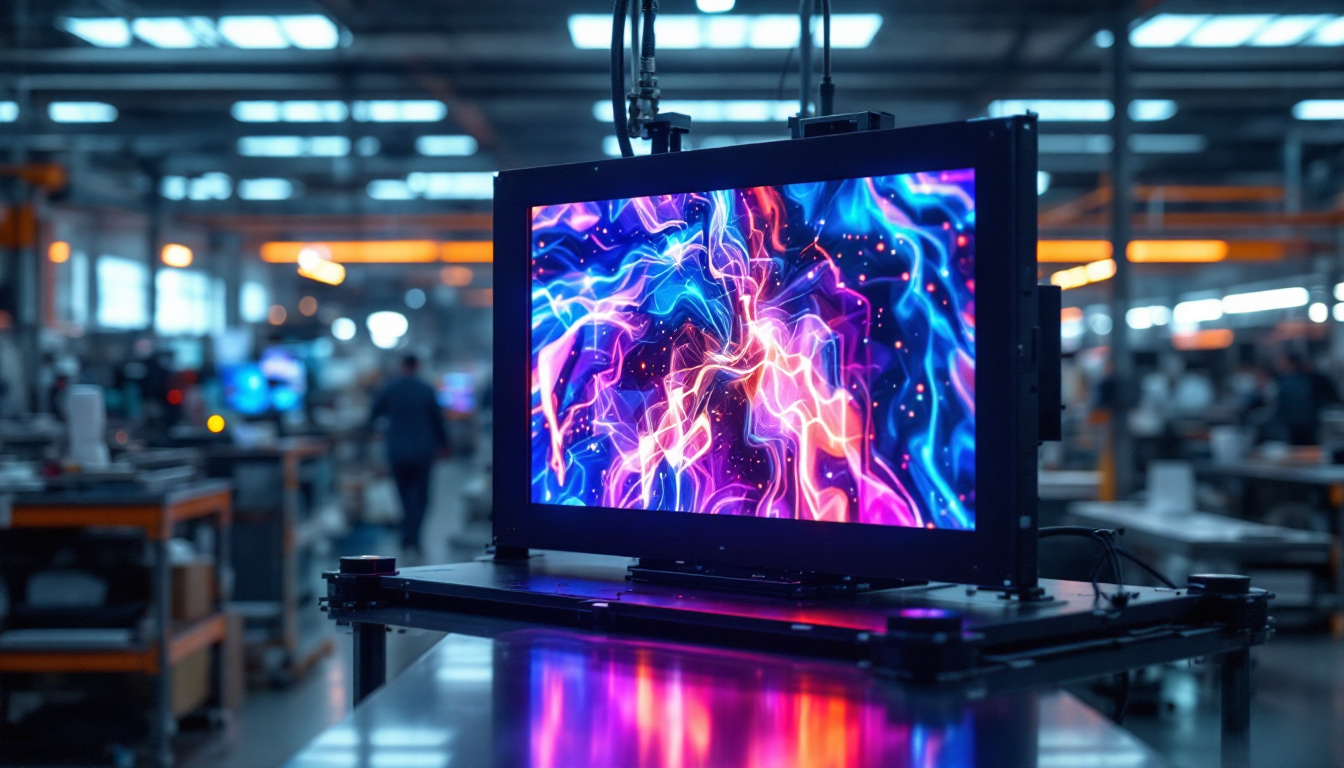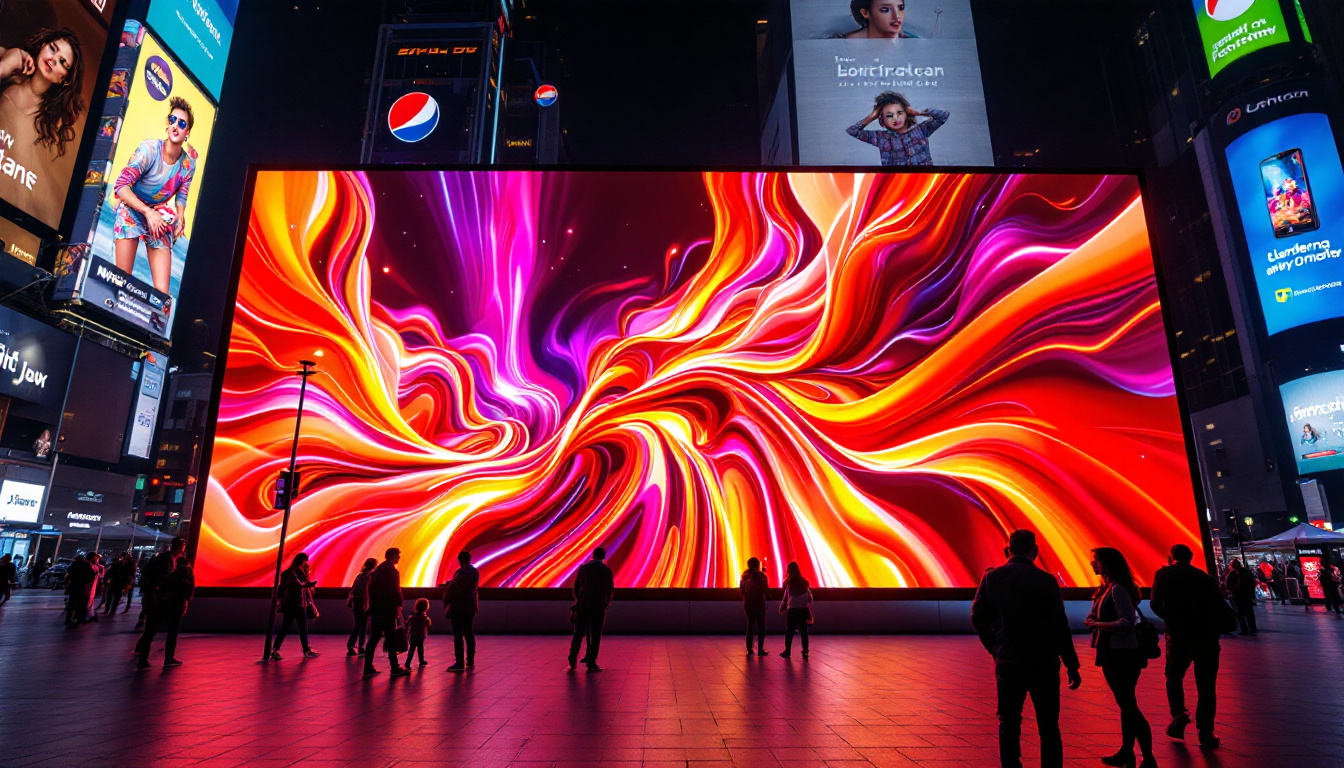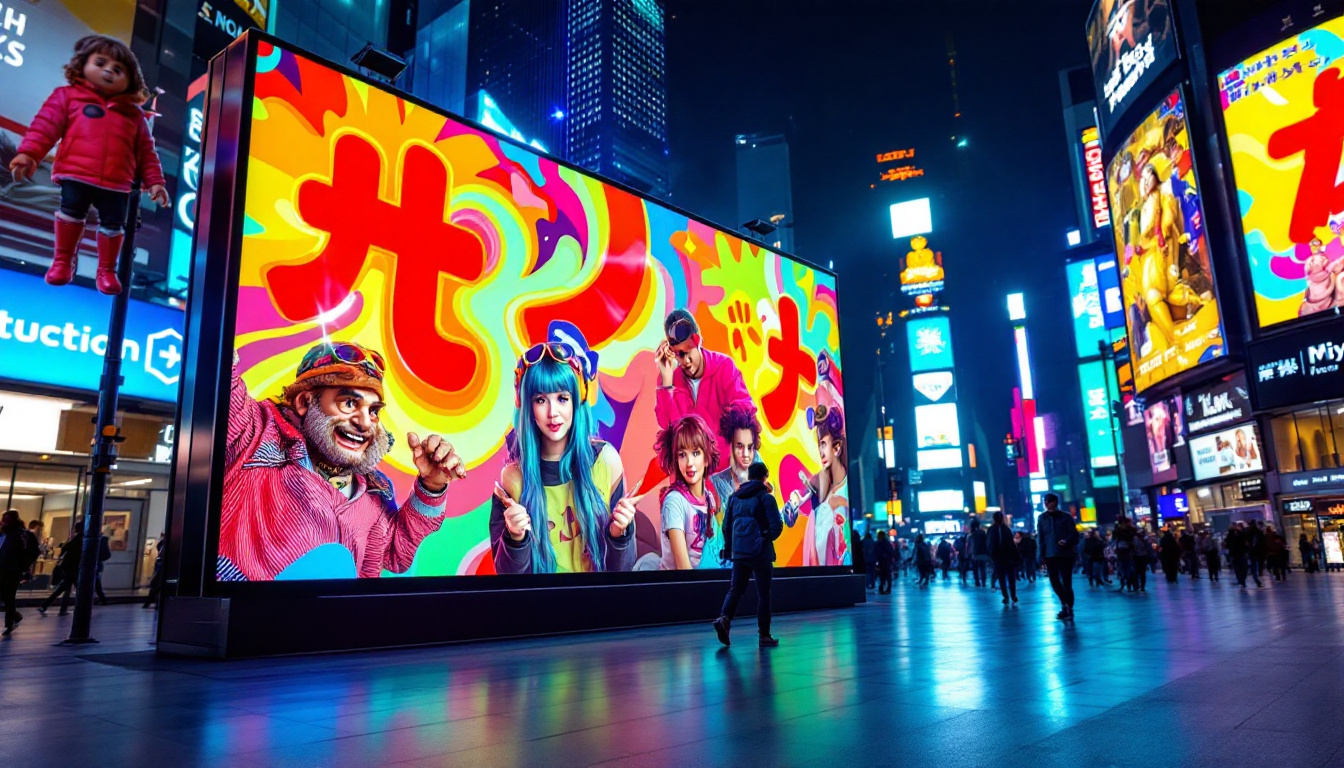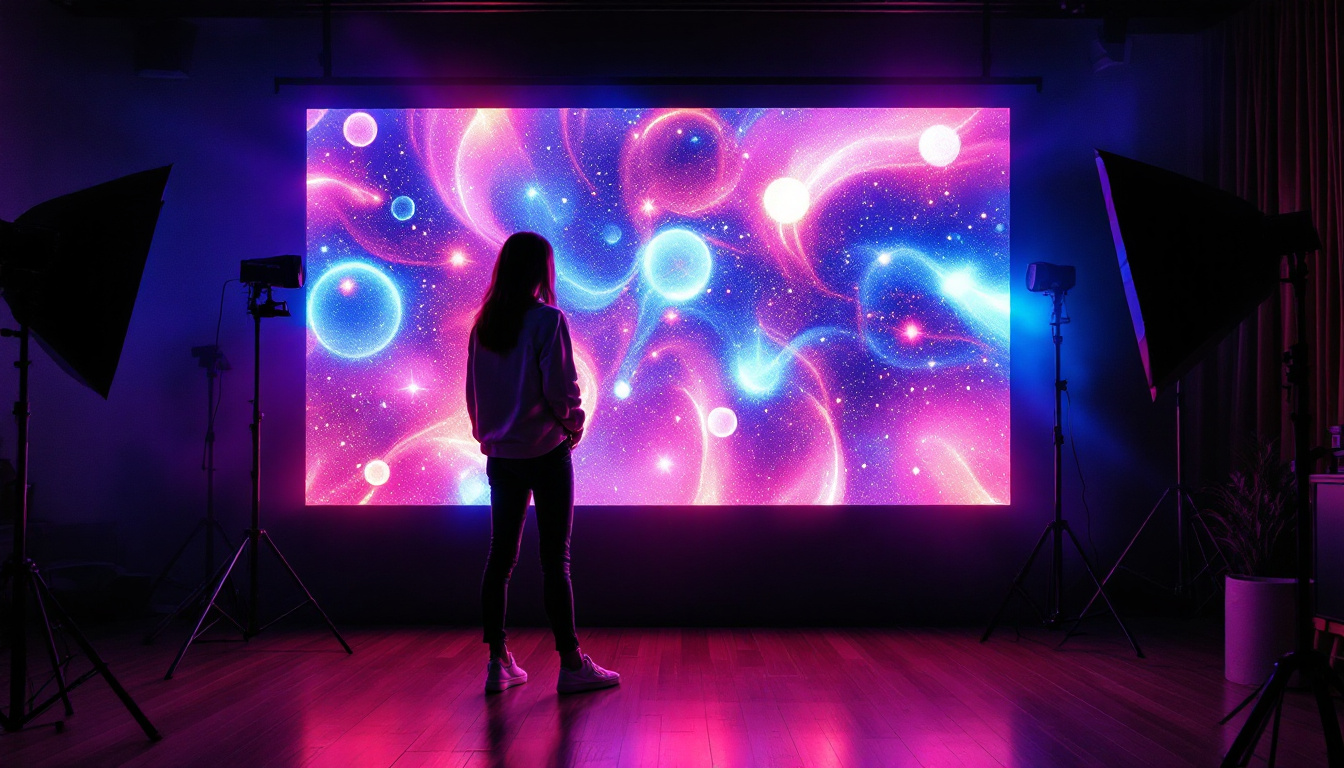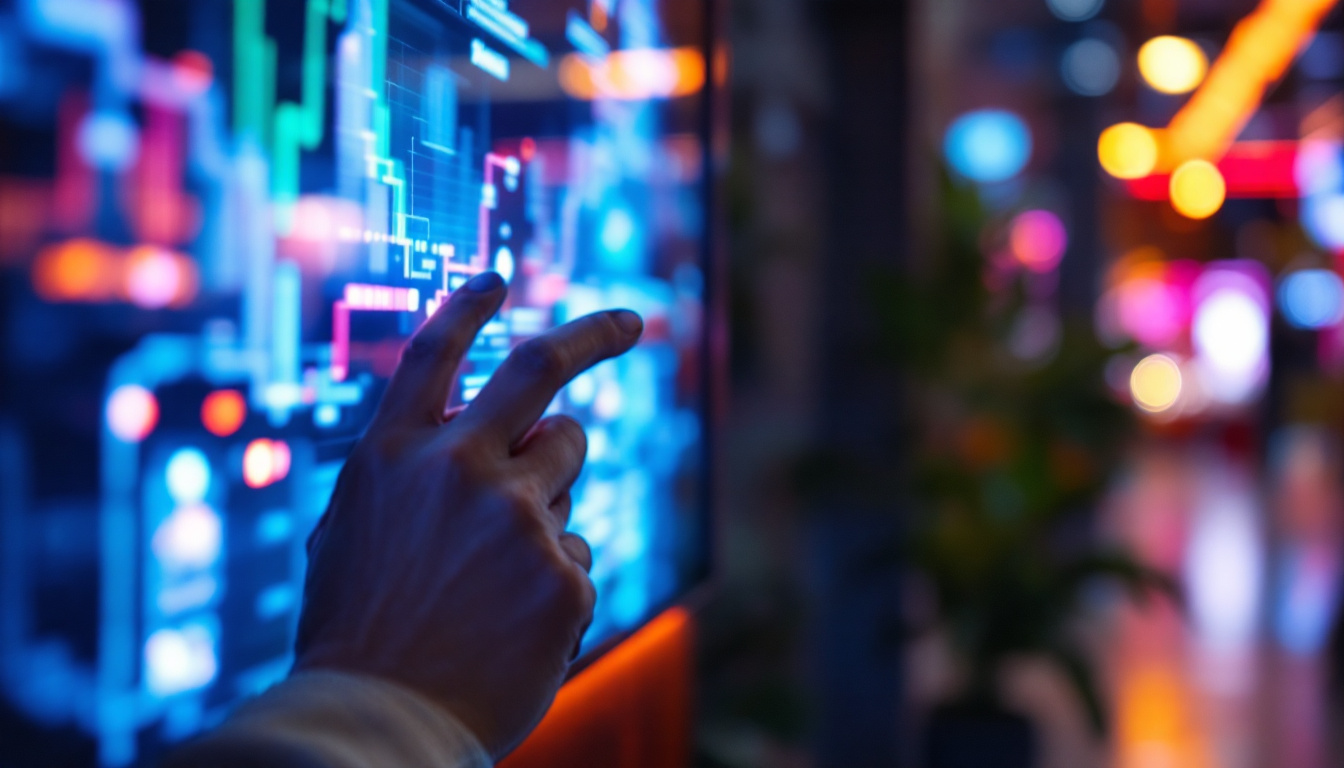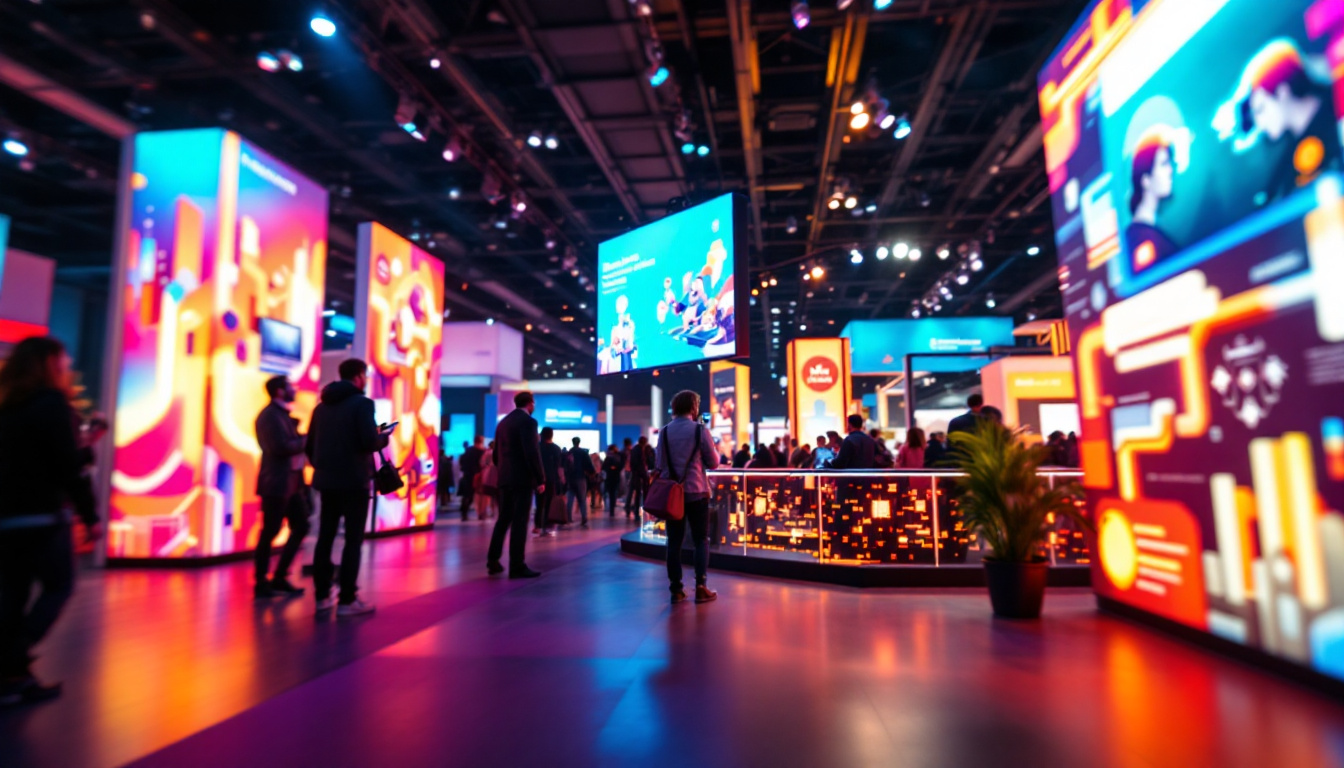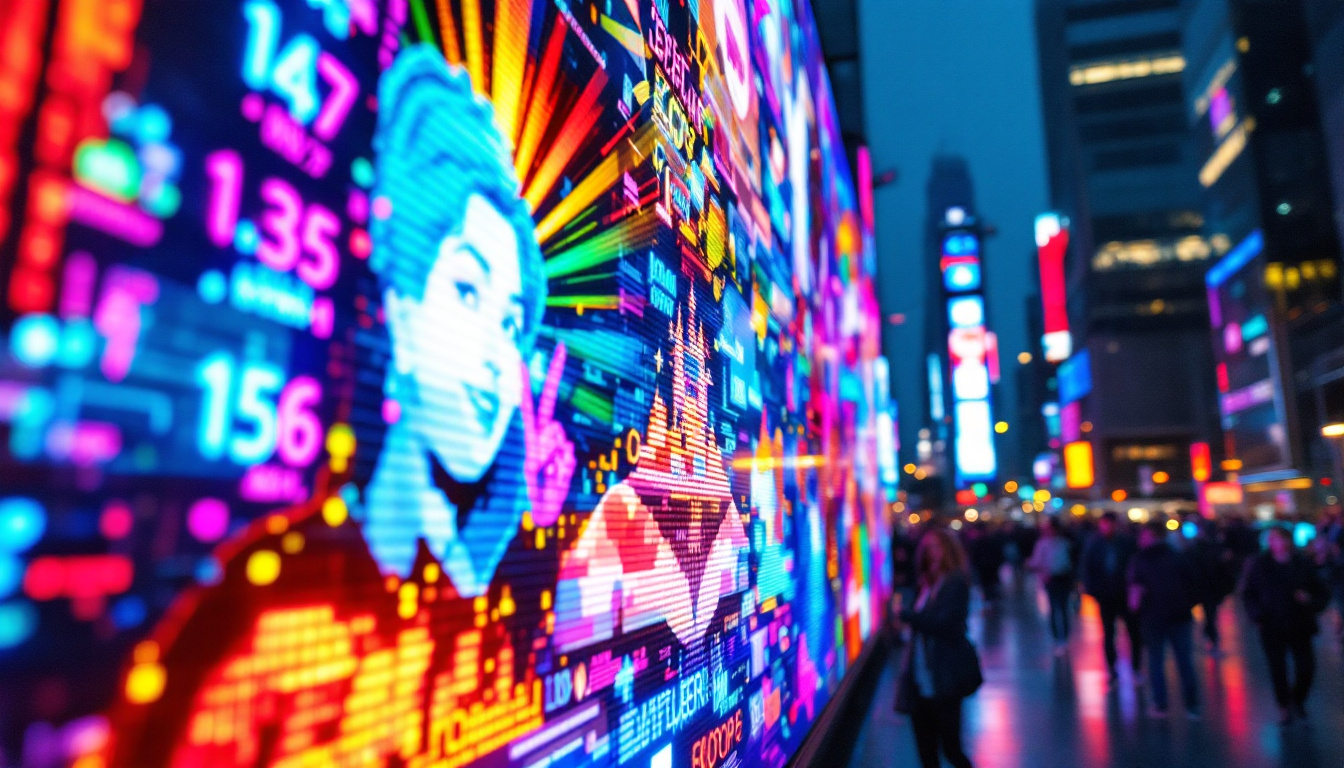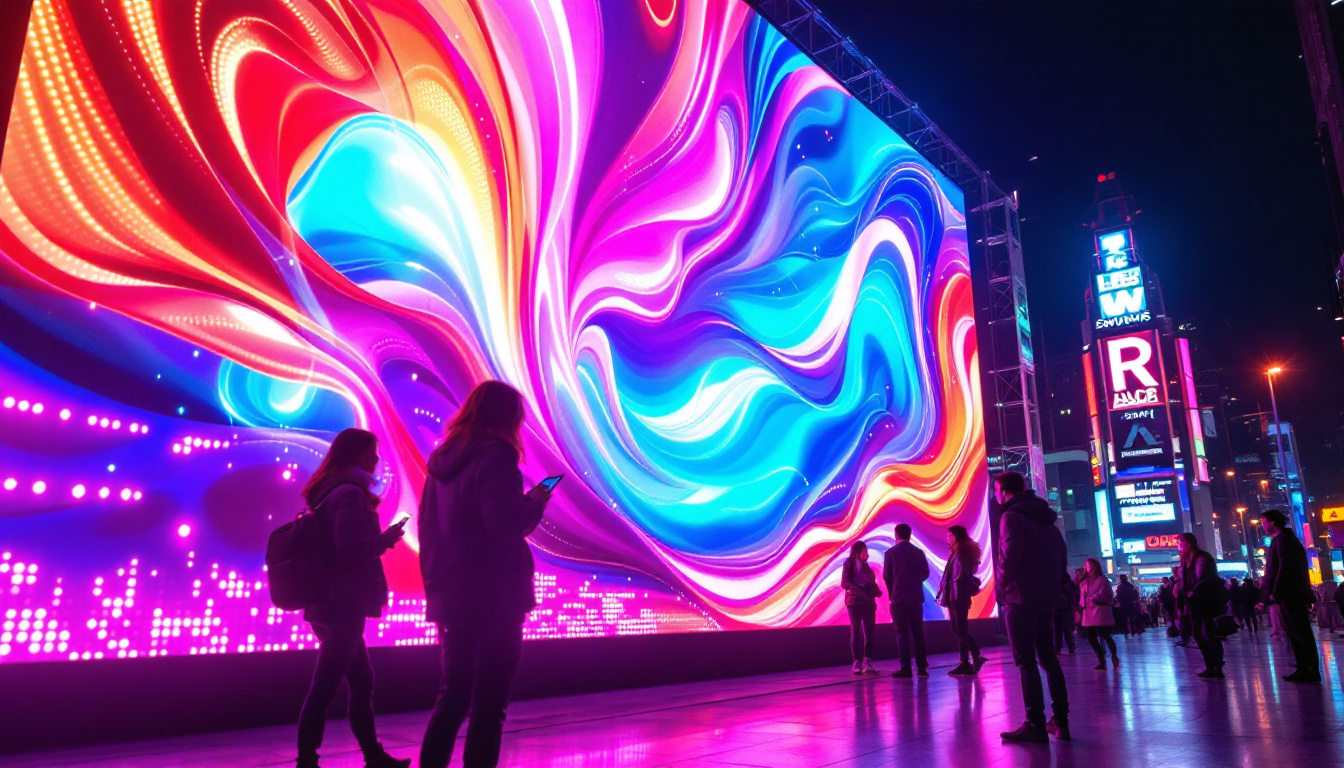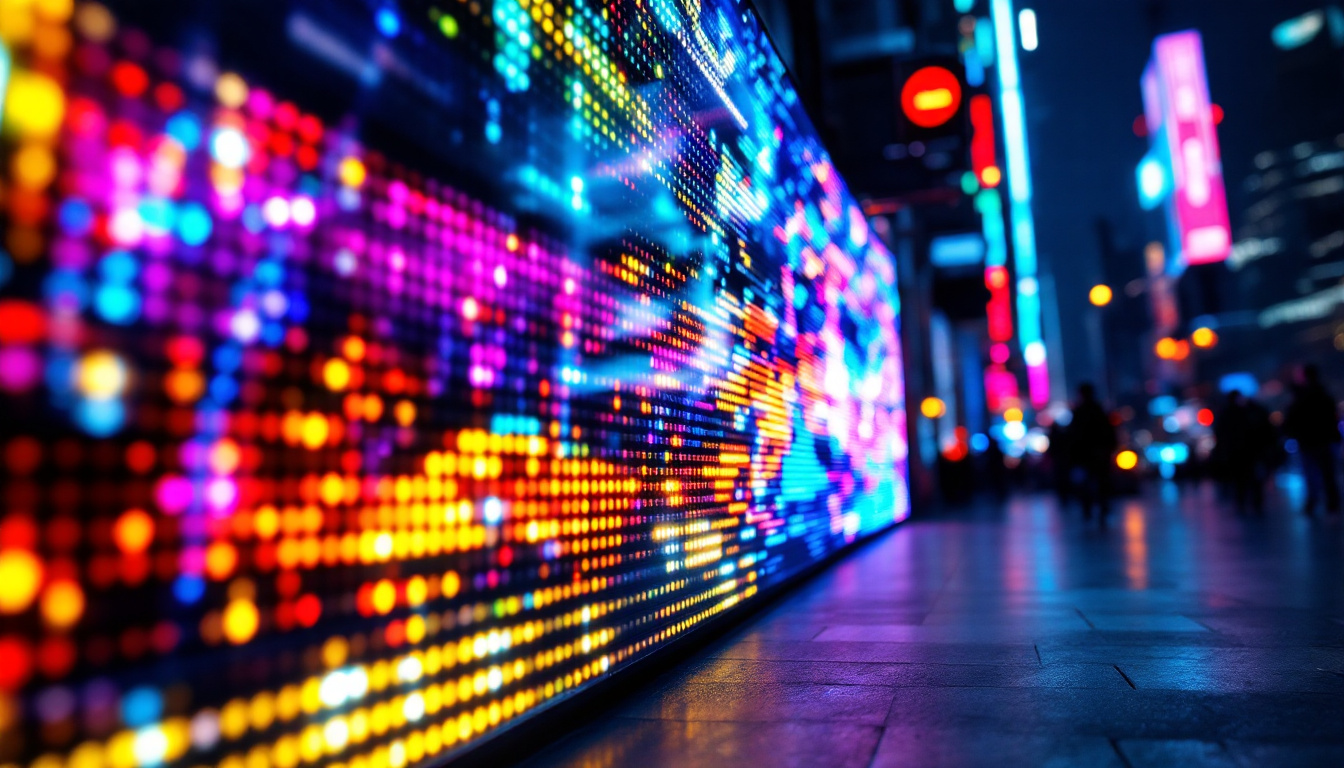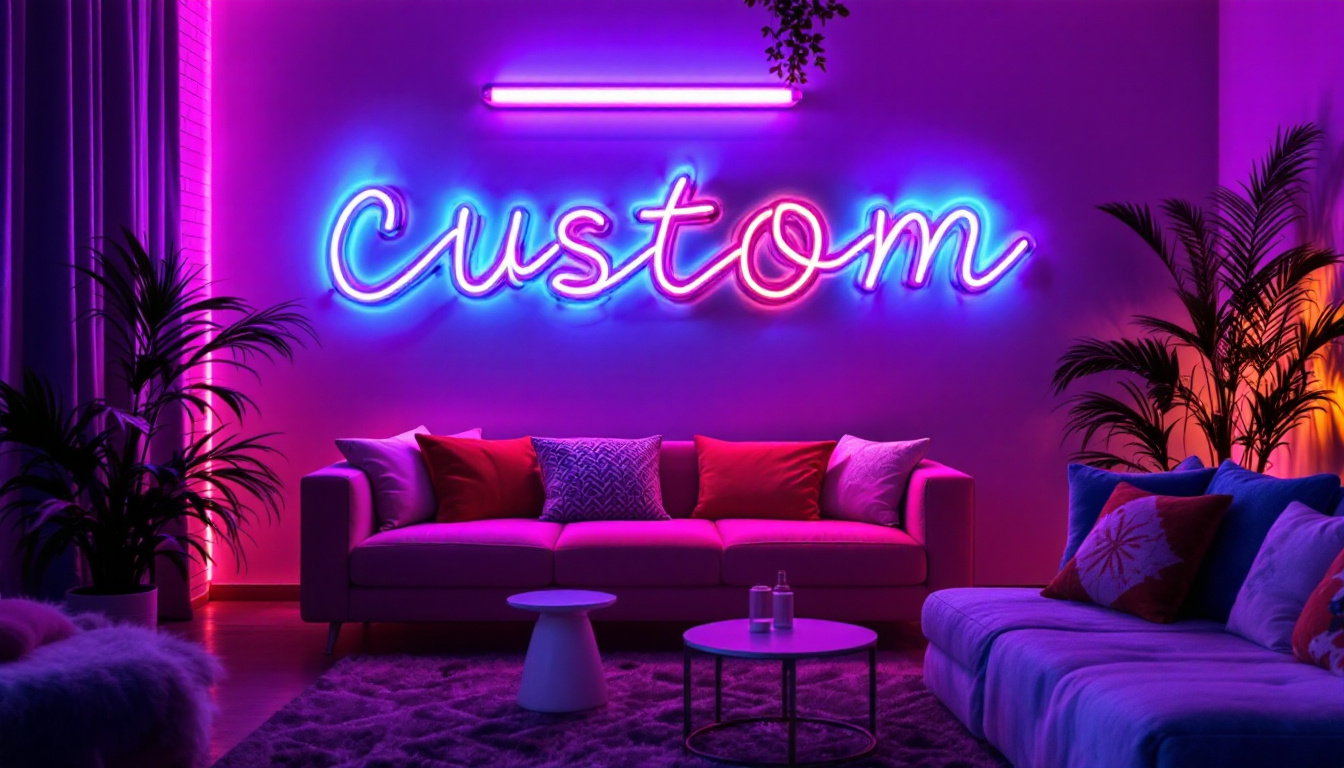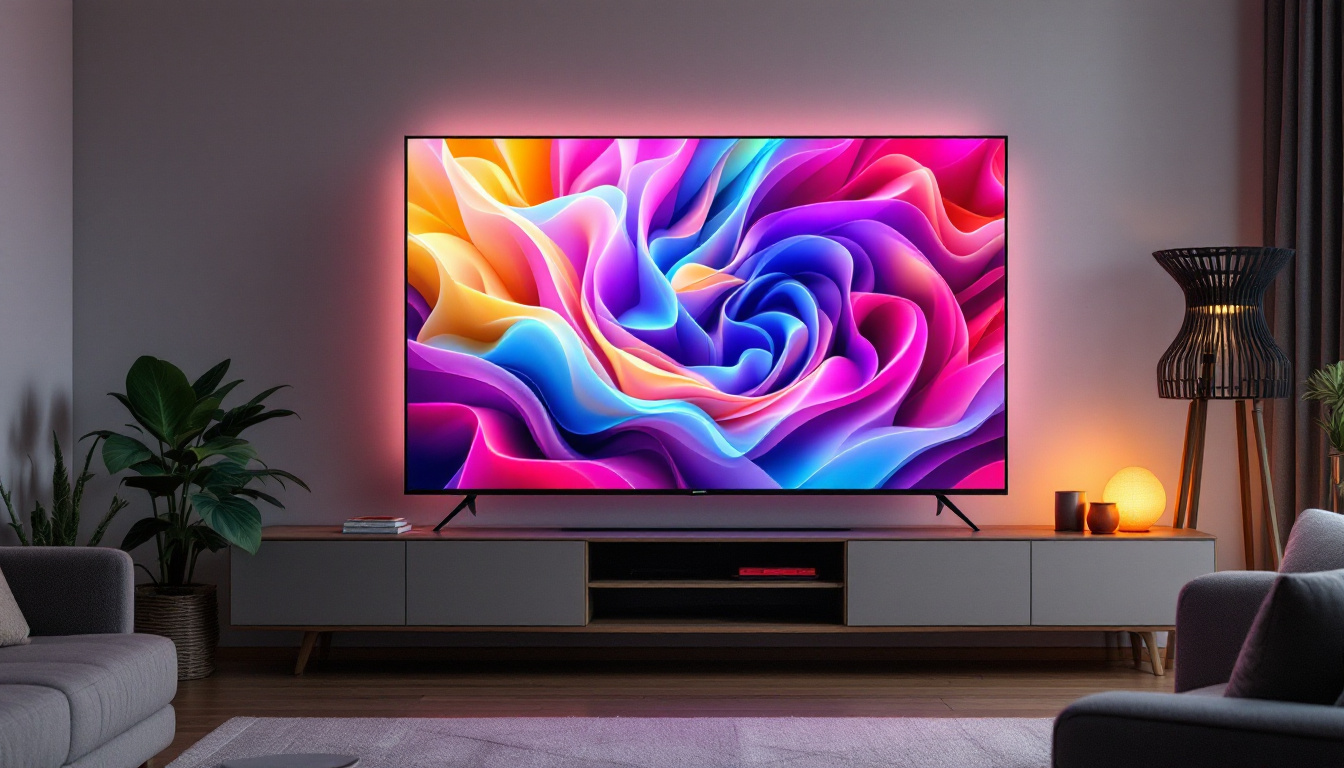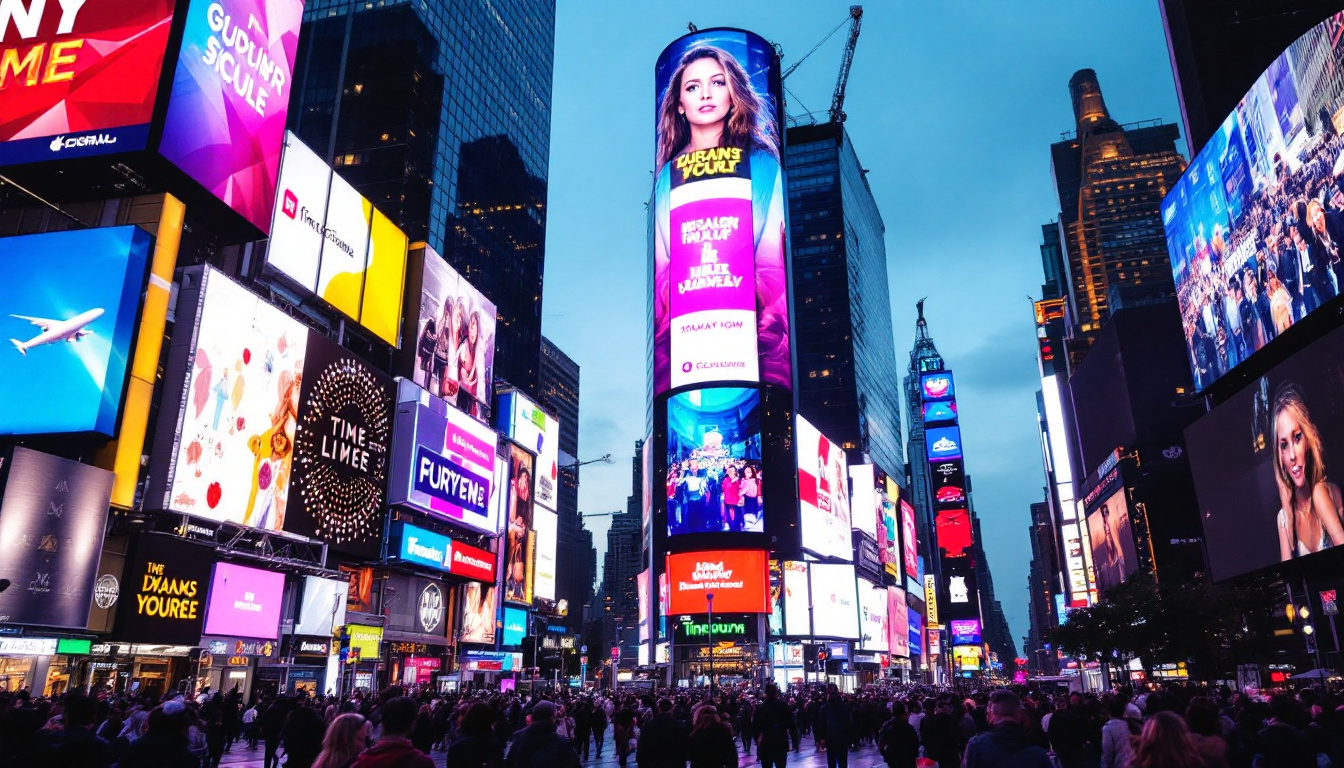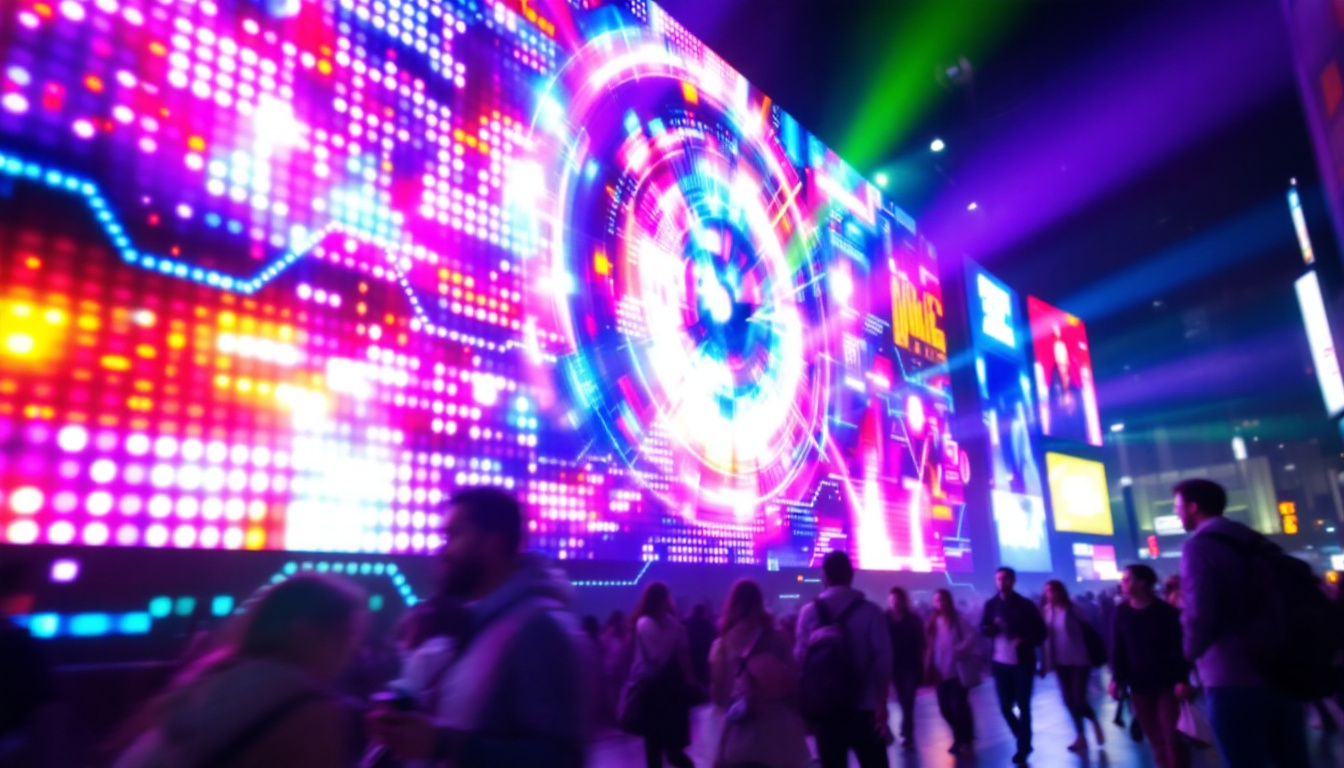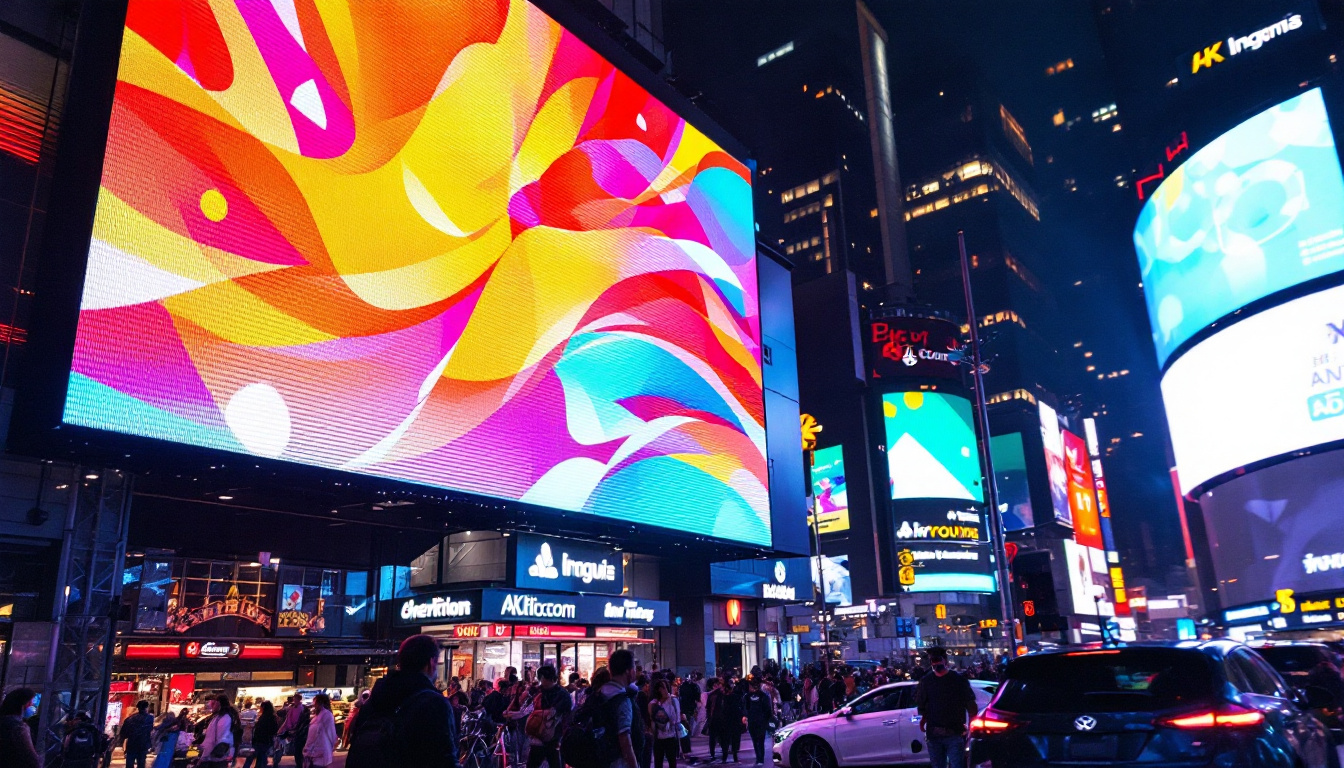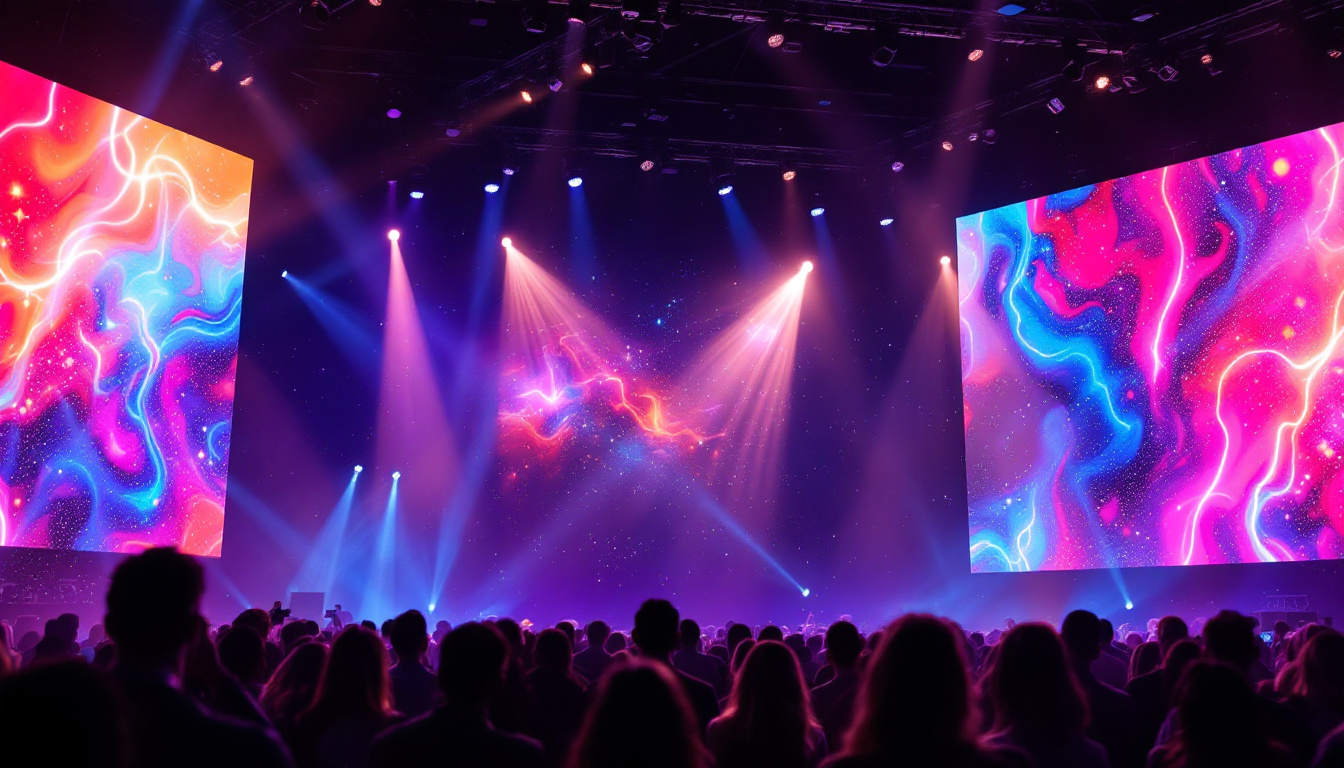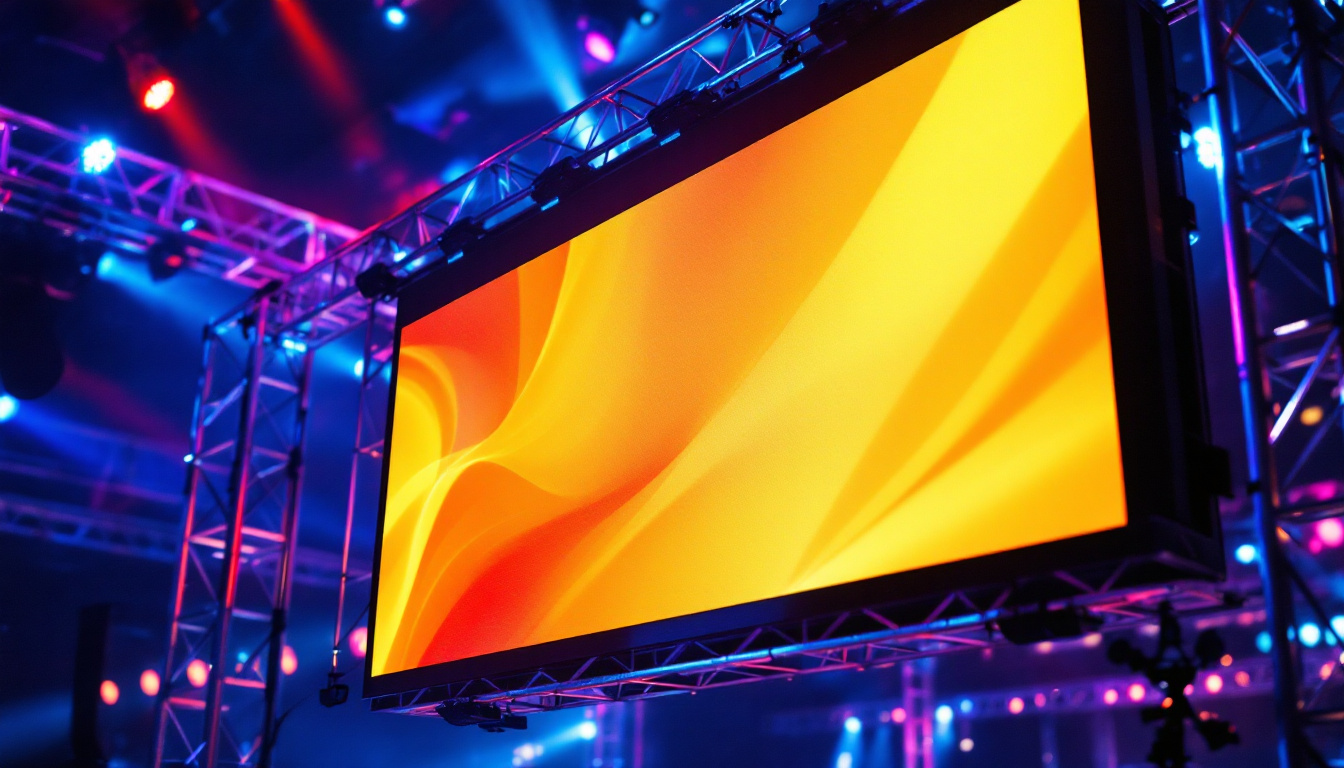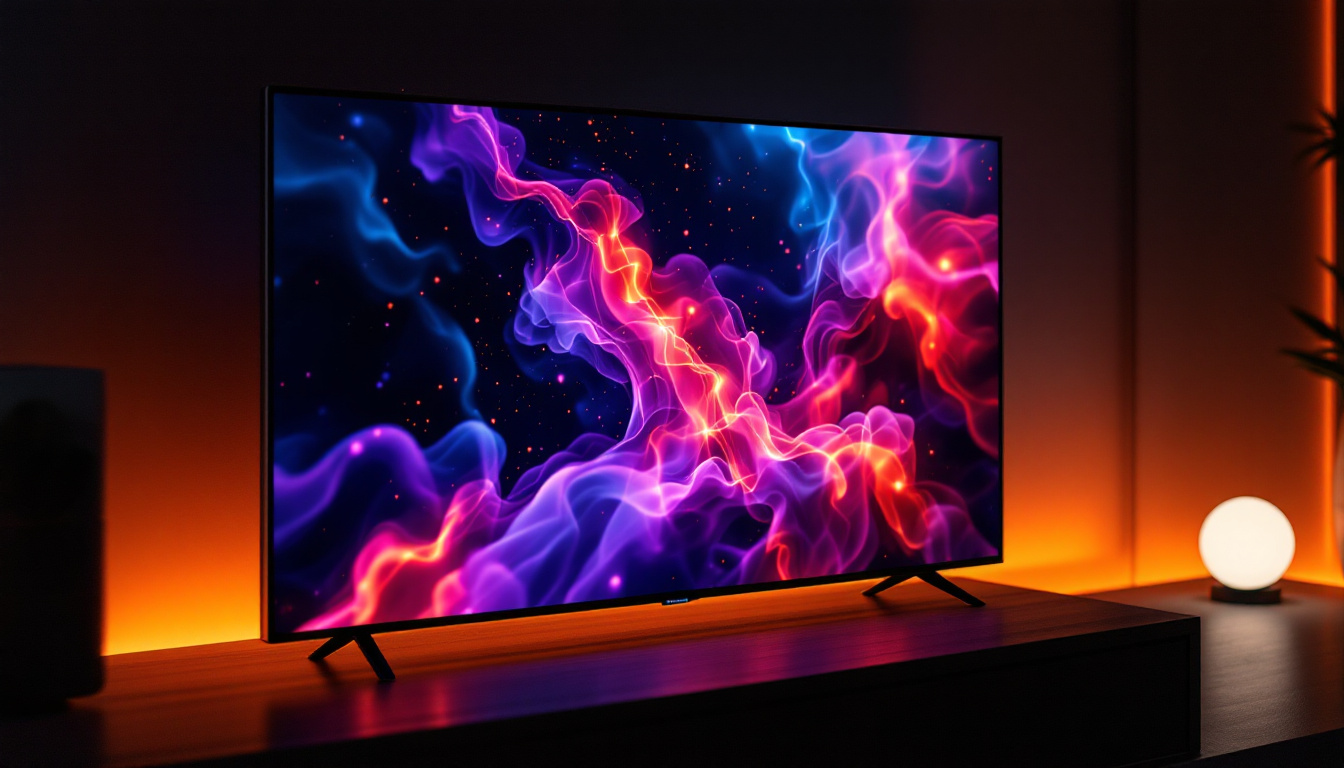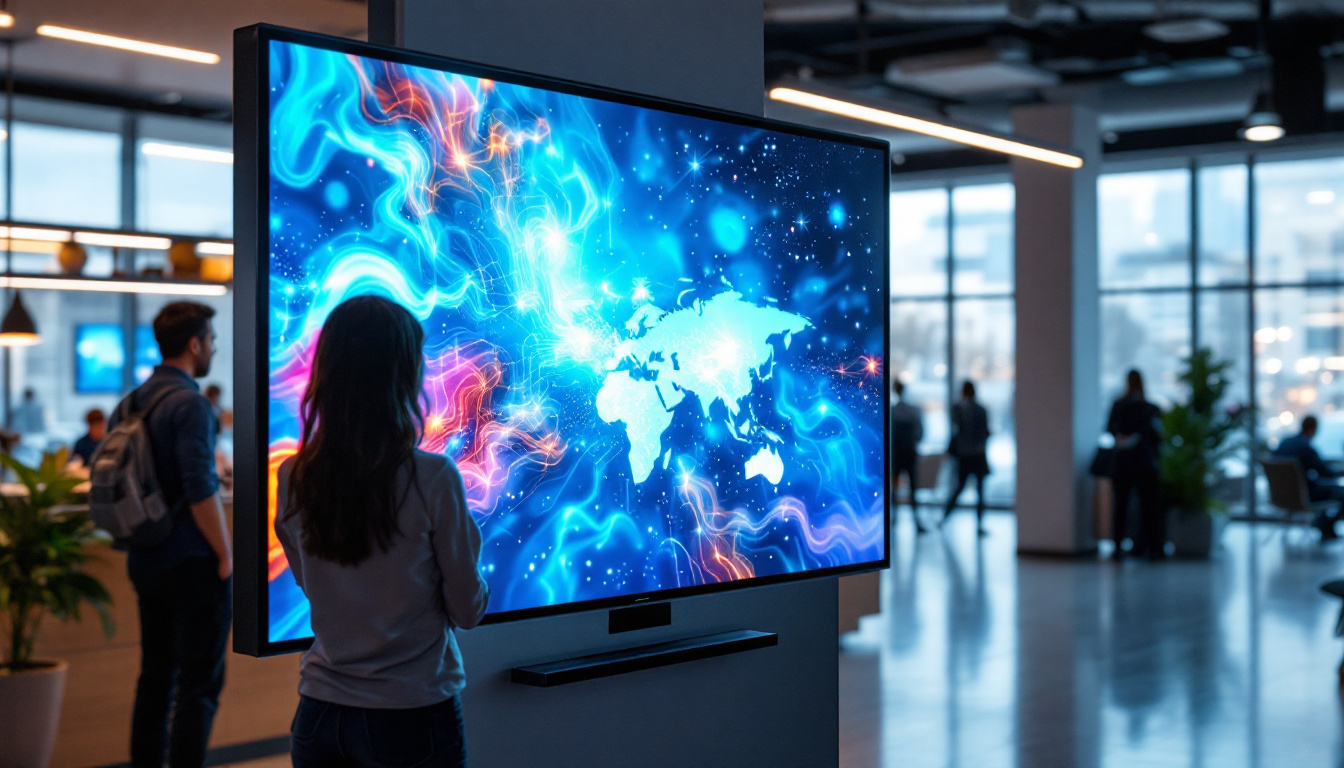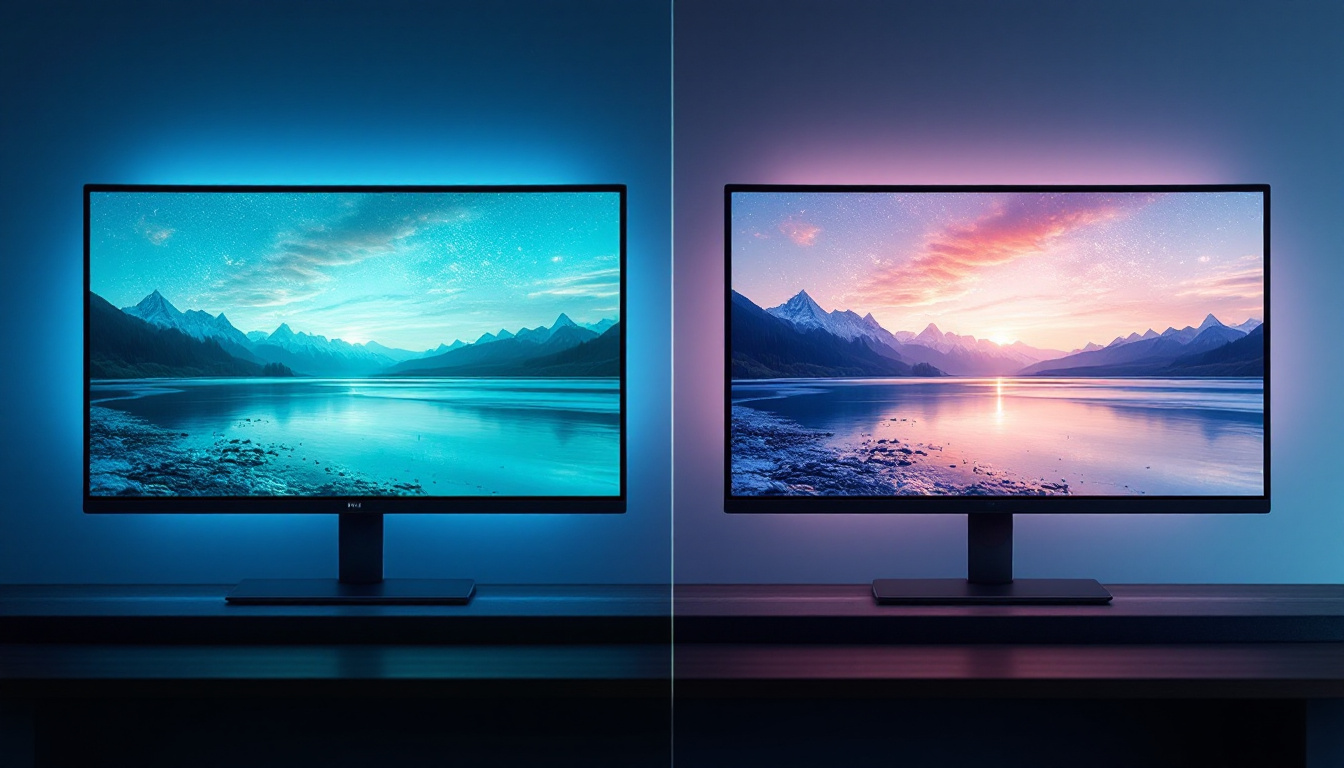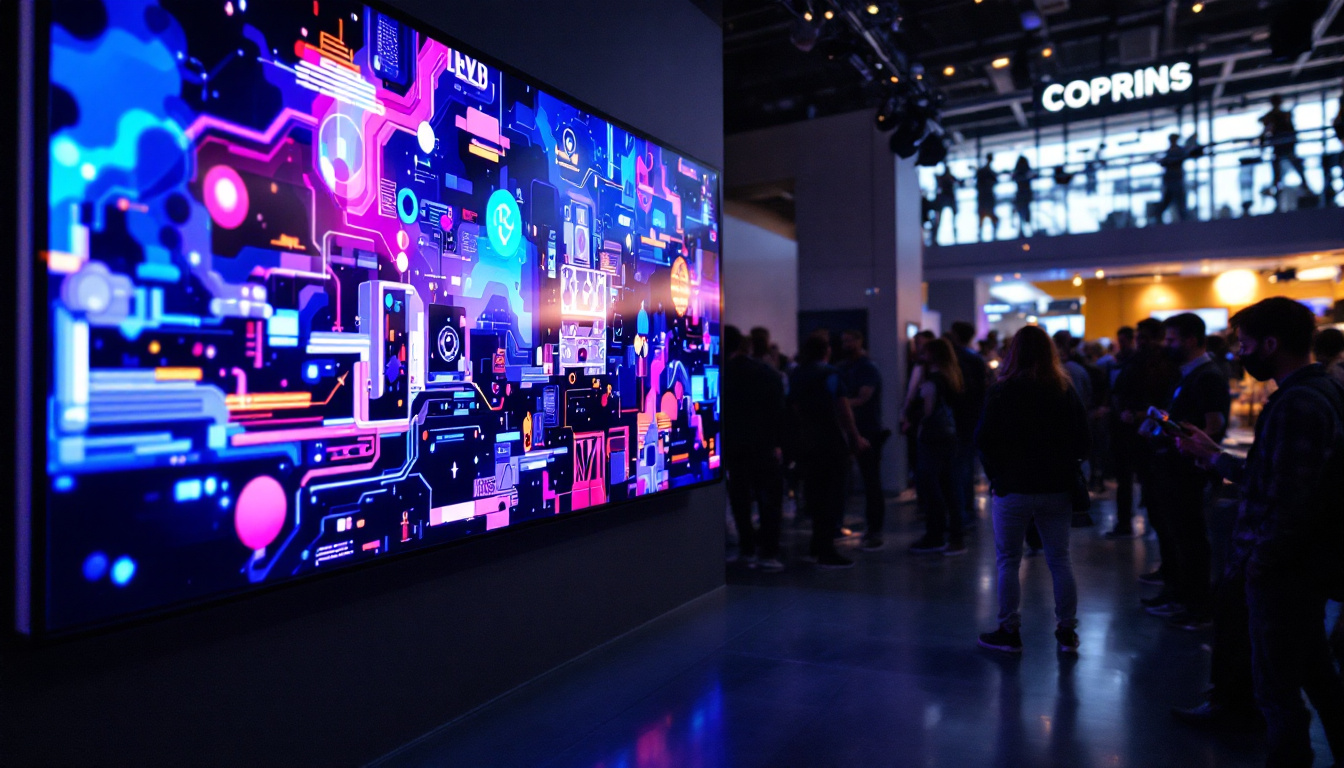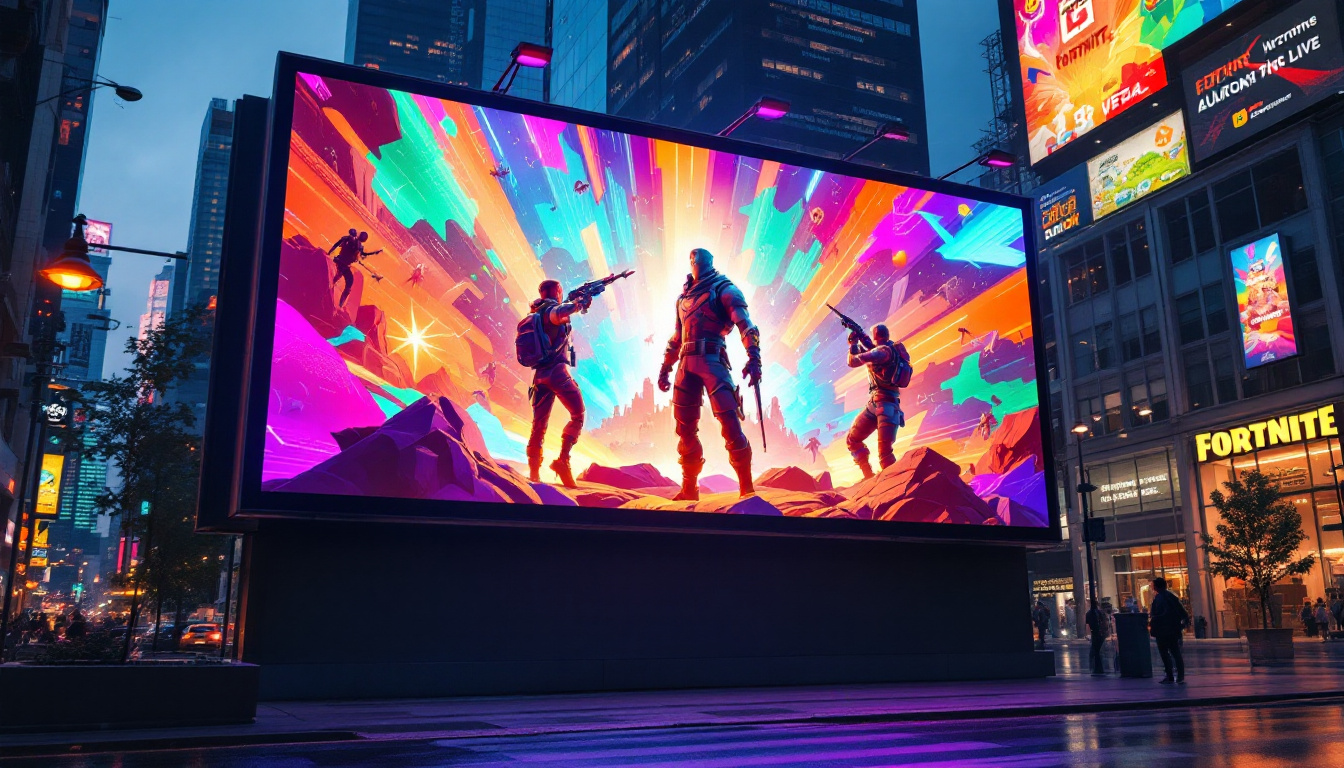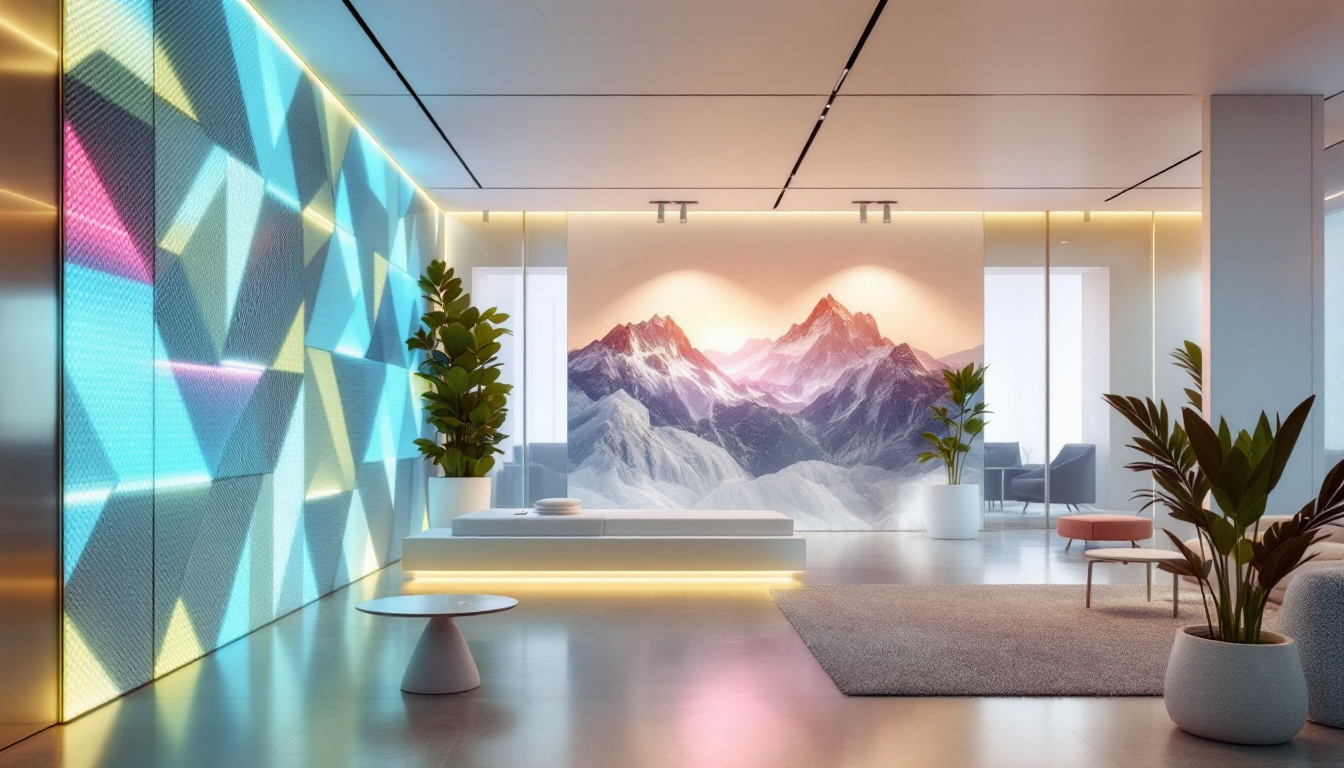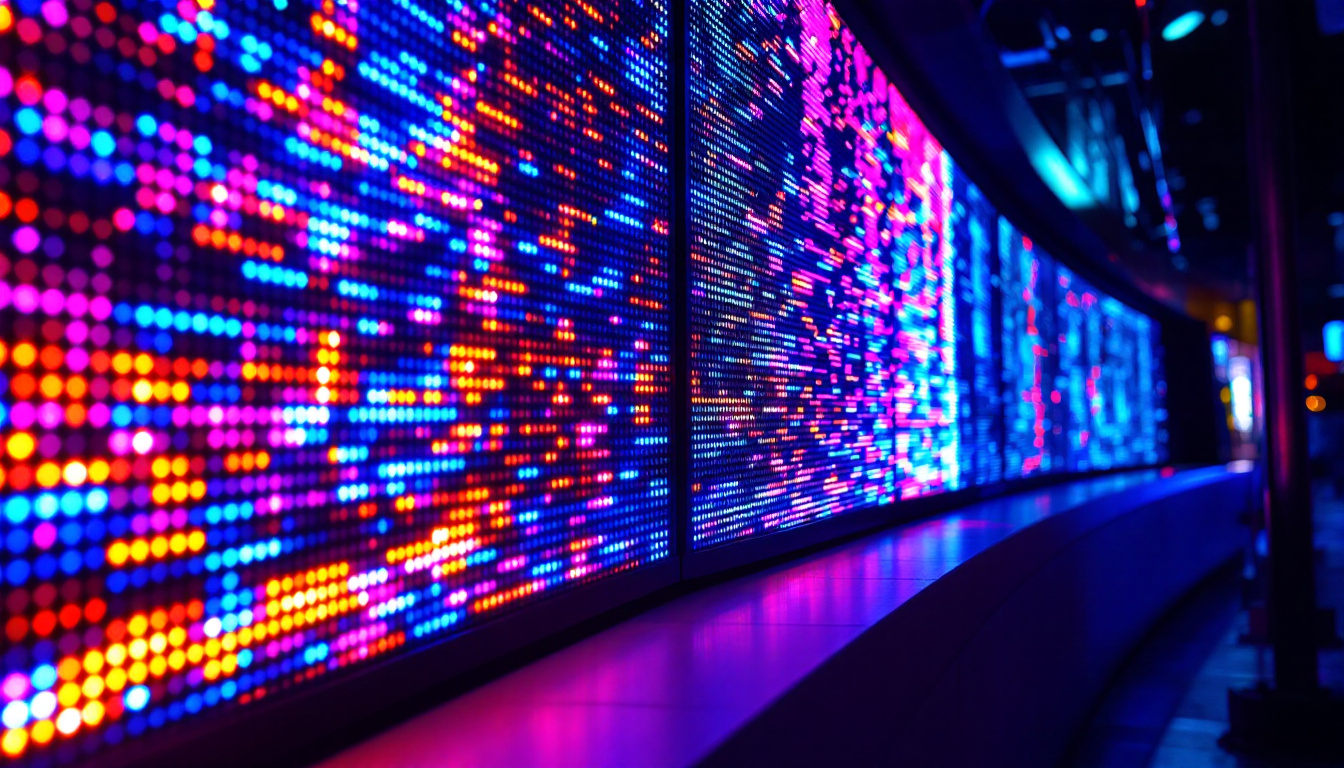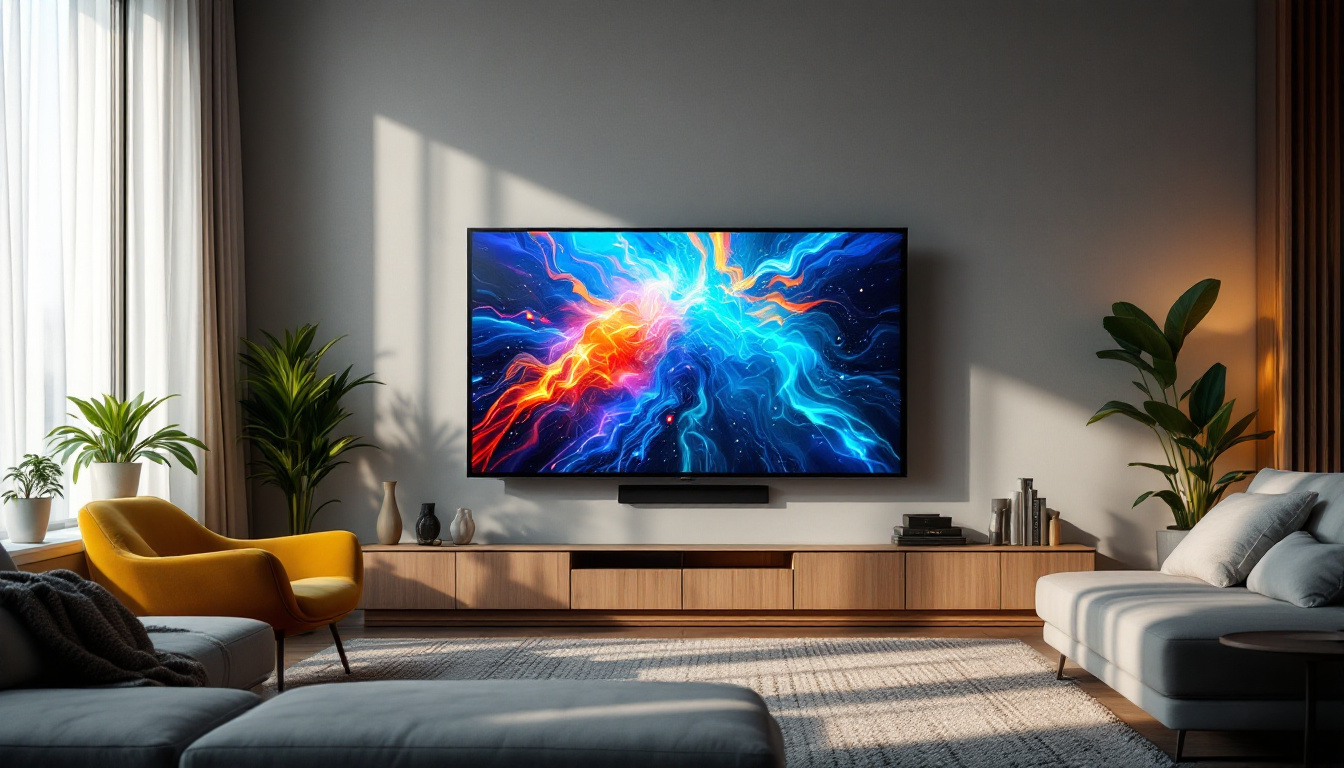In the ever-evolving world of digital signage, LED displays have emerged as a pivotal technology, transforming how businesses communicate with their audiences. Clicorp, a leader in this field, offers a range of LED display solutions that cater to various needs, from advertising to information dissemination. This article delves into the intricacies of LED displays, exploring their technology, applications, and the advantages they offer in modern communication strategies.
Understanding LED Display Technology
LED displays utilize light-emitting diodes (LEDs) as their primary source of illumination. These diodes are semiconductor devices that emit light when an electric current passes through them. The technology behind LED displays is both innovative and versatile, allowing for vibrant colors, high brightness, and energy efficiency. As the demand for high-quality visual displays continues to grow, LED technology has evolved to meet the needs of various industries, from advertising to entertainment and beyond.
How LED Displays Work
At the core of an LED display are clusters of tiny LEDs that combine to form pixels. Each pixel consists of red, green, and blue (RGB) diodes, which can be adjusted in intensity to create a wide spectrum of colors. By manipulating the brightness of these diodes, LED displays can produce images and videos with remarkable clarity and detail. The technology also allows for dynamic content, enabling displays to change images or messages in real-time, which is particularly useful for advertising and information dissemination.
The arrangement of these pixels determines the resolution of the display. Higher resolutions result in sharper images, making them ideal for close-up viewing. Conversely, lower resolutions may suffice for larger displays viewed from a distance, such as those found in stadiums or on billboards. Additionally, advancements in pixel pitch—the distance between the centers of adjacent pixels—have enabled manufacturers to create displays that maintain high image quality even at larger sizes, catering to a variety of viewing environments.
Types of LED Displays
LED displays come in various forms, each designed for specific applications. The most common types include:
- Indoor LED Displays: These are typically used in retail environments, conference rooms, and entertainment venues. They offer high resolution and vibrant colors, making them suitable for close viewing. The flexibility of indoor displays allows for creative installations, such as curved or modular designs that can fit unique spaces.
- Outdoor LED Displays: Built to withstand harsh weather conditions, outdoor displays are often utilized for advertising and public information. They are designed for high brightness and durability, ensuring visibility even in direct sunlight. Many outdoor displays also incorporate advanced cooling systems to manage heat and maintain performance over time.
- Transparent LED Displays: These innovative displays allow viewers to see through them while still displaying images and videos. They are often used in storefronts and exhibitions to create eye-catching visuals without obstructing the view. This technology not only enhances aesthetic appeal but also provides functional benefits, allowing for natural light to filter through while showcasing promotional content.
Another emerging type of LED display is the flexible LED screen, which can bend and conform to various shapes. This adaptability opens up new possibilities for creative installations in art, architecture, and event production. Furthermore, advancements in microLED technology are paving the way for even smaller, more efficient displays that promise to deliver exceptional image quality and color accuracy, setting the stage for the next generation of visual experiences.
Applications of LED Displays
LED displays have found applications across various industries, revolutionizing how information is shared and consumed. Their versatility makes them suitable for numerous settings, including:
Advertising and Marketing
One of the most prominent uses of LED displays is in advertising. Businesses leverage their eye-catching visuals to attract customers and convey messages effectively. From large billboards in busy urban areas to smaller displays in retail stores, LED technology enhances brand visibility and engagement.
Dynamic content can be easily updated, allowing businesses to promote special offers, events, or new products in real-time. This flexibility not only saves time but also reduces printing costs associated with traditional signage. Additionally, the ability to incorporate animations and videos into advertisements can significantly increase viewer retention and engagement, making LED displays a powerful tool for marketers looking to stand out in a crowded marketplace.
Public Information Systems
LED displays play a crucial role in public information systems, providing real-time updates in transportation hubs, airports, and train stations. They display arrival and departure times, weather updates, and emergency alerts, ensuring that the public is informed and safe.
Moreover, LED screens are often used in stadiums and arenas to enhance the spectator experience. They provide live game updates, replays, and advertisements, creating an engaging atmosphere for fans. The integration of LED technology in public spaces not only improves communication but also fosters a sense of community, as people gather around these displays to share information and experiences, especially during major events or emergencies.
Events and Entertainment
In the realm of events and entertainment, LED displays have become indispensable. Concerts, festivals, and corporate events utilize large LED screens to create immersive experiences for attendees. These displays can showcase live performances, video content, and interactive elements that captivate audiences.
Additionally, LED technology allows for creative stage designs, enabling event organizers to push the boundaries of visual storytelling. The ability to customize content for different events ensures that each experience is unique and memorable. For instance, during music festivals, LED walls can be synchronized with the rhythm of the music, creating a multisensory experience that enhances the overall atmosphere. Furthermore, the portability and ease of setup of LED displays make them an ideal choice for traveling shows and exhibitions, allowing for seamless transitions between venues while maintaining high-quality visuals.
Advantages of LED Displays
The popularity of LED displays can be attributed to their numerous advantages over traditional display technologies. Some of the key benefits include:
Energy Efficiency
LED displays are known for their energy efficiency. Compared to older technologies like LCD and plasma displays, LEDs consume significantly less power while delivering brighter images. This efficiency not only reduces operational costs but also contributes to a smaller carbon footprint, making them an environmentally friendly choice.
Longevity and Durability
LED displays are built to last. With a lifespan of up to 100,000 hours, they outlast many other display technologies. This durability makes them a cost-effective investment for businesses, as they require less frequent replacements and maintenance.
Furthermore, outdoor LED displays are designed to withstand harsh weather conditions, ensuring that they remain functional and visually appealing even in extreme environments.
High Brightness and Contrast
One of the standout features of LED displays is their high brightness levels. This characteristic allows them to be easily viewed in various lighting conditions, making them ideal for outdoor use. The contrast ratio of LED displays also enhances image quality, providing deeper blacks and more vibrant colors.
Challenges and Considerations
Despite their many advantages, LED displays are not without challenges. Businesses considering the adoption of this technology should be aware of potential drawbacks and considerations.
Initial Investment Costs
While LED displays offer long-term savings, the initial investment can be significant. High-quality LED screens, especially those designed for outdoor use, can be costly. Businesses must weigh the upfront costs against the potential return on investment, considering factors such as increased visibility and customer engagement.
Content Management
Effective content management is crucial for maximizing the impact of LED displays. Businesses need to invest in software and training to create and manage dynamic content. Regular updates and maintenance are essential to keep the display relevant and engaging for the audience.
Viewing Angles and Distance
Another consideration is the viewing angle and distance. While LED displays offer excellent image quality, the viewing experience can vary depending on the angle from which they are viewed. Businesses should carefully assess the placement of their displays to ensure optimal visibility for their target audience.
Future Trends in LED Display Technology
The LED display industry is continually evolving, with new technologies and trends emerging to enhance performance and usability. Some of the most notable trends shaping the future of LED displays include:
Advancements in MicroLED Technology
MicroLED technology represents a significant leap forward in display technology. By utilizing smaller LED chips, MicroLED displays can achieve higher resolutions and improved color accuracy. This technology promises to deliver even more immersive experiences, particularly in applications such as virtual reality and augmented reality.
Integration with Smart Technologies
As smart technology continues to gain traction, LED displays are increasingly being integrated with IoT (Internet of Things) systems. This integration allows for real-time data sharing and content updates, enhancing the interactivity and responsiveness of displays. Businesses can leverage this technology to create personalized experiences for their customers.
Sustainability Initiatives
With growing concerns about environmental impact, the LED display industry is focusing on sustainability. Manufacturers are exploring eco-friendly materials and production processes to reduce waste and energy consumption. This shift towards sustainability not only benefits the environment but also aligns with consumer preferences for eco-conscious products.
Conclusion
LED displays have revolutionized the way businesses communicate with their audiences, offering vibrant visuals and dynamic content capabilities. Clicorp stands at the forefront of this technology, providing innovative solutions that cater to a wide range of applications. While the initial investment may be substantial, the long-term benefits of LED displays, including energy efficiency, durability, and enhanced visibility, make them a worthwhile consideration for any organization.
As technology continues to advance, the future of LED displays looks promising, with trends such as MicroLED technology and smart integrations paving the way for even more exciting developments. Embracing this technology can empower businesses to engage their audiences more effectively, ensuring they remain competitive in an increasingly digital world.
Discover LumenMatrix LED Display Solutions
Ready to elevate your visual communication strategy with cutting-edge LED technology? Explore LumenMatrix’s diverse range of LED display solutions, tailored to meet your specific needs. From captivating Indoor LED Walls to dynamic Outdoor Displays and beyond, LumenMatrix is committed to revolutionizing the way businesses engage with their audience. Check out LumenMatrix LED Display Solutions today and transform your brand’s visibility with unparalleled clarity and impact.

